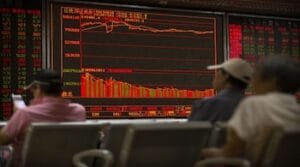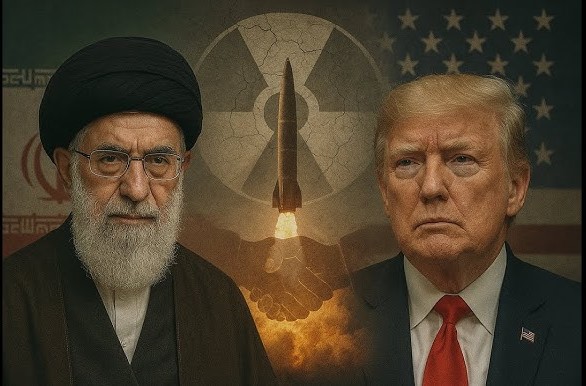Middle East Instability
Meta Description
Discover how Middle East instability is impacting global markets. From rising oil prices to investor uncertainty, learn what this means for the global economy and your financial future.
How Middle East Instability Is Influencing Global Markets

As you monitor global financial markets, you’ve likely noticed the ripple effects of ongoing instability in the Middle East. From oil price fluctuations to currency volatility, the region’s geopolitical tensions are reverberating across the world economy.This article will examine how specific flashpoints in the Middle East are impacting key economic indicators and market sectors.
You’ll gain insights into the interconnected nature of today’s global markets and learn how to navigate the uncertainties stemming from this pivotal region. By the end, you’ll be better equipped to anticipate and respond to market shifts driven by Middle Eastern events.
Understanding the Middle East Instability
According to S&P Global,

Historical Context and Current Tensions
The Middle East has long been a region of geopolitical significance, marked by complex historical, religious, and economic factors. Today’s instability stems from a combination of long-standing conflicts, power struggles, and resource competition. Key flashpoints include the Israeli-Palestinian conflict, sectarian divisions between Sunni and Shia Muslims, and the ongoing rivalry between regional powers like Saudi Arabia and Iran.
Impact on Global Energy Markets
The Middle East’s vast oil reserves make its stability crucial for global energy security. Political upheavals or military conflicts in the region can lead to supply disruptions, causing oil prices to spike. This volatility reverberates through global markets, affecting everything from transportation costs to consumer goods prices. Investors and businesses worldwide closely monitor Middle Eastern developments, as sudden changes can dramatically impact their operations and profitability.
Ripple Effects on International Relations
Middle East instability often draws in global powers, influencing diplomatic relationships and international alliances. The United States, Russia, China, and European nations all have vested interests in the region, leading to complex geopolitical maneuvering. These dynamics can affect trade agreements, defense spending, and even domestic politics in countries far removed from the Middle East, underscoring the interconnected nature of today’s global economy and political landscape.
The Impact of Middle East Instability on Global Trade

Disruptions in Oil Supply Chains
The Middle East’s geopolitical tensions have far-reaching consequences for global trade, particularly in the energy sector. As a major oil-producing region, instability can lead to supply disruptions and price volatility. When conflicts arise or tensions escalate, the global oil market often experiences immediate shocks, causing ripple effects across industries worldwide.
Shifts in Trade Routes and Transportation Costs
Political unrest in the Middle East can force alterations in established trade routes, especially for maritime shipping. The Suez Canal, a critical waterway for international commerce, becomes vulnerable during periods of regional instability. Rerouting vessels to avoid high-risk areas increases transportation times and costs, impacting global supply chains and consumer prices.
Economic Uncertainty and Investment Hesitation
Middle East instability creates an atmosphere of economic uncertainty that reverberates through global markets. Investors may become hesitant to commit capital to projects or ventures in the region, potentially slowing economic growth and development. This cautious approach can extend beyond the Middle East, affecting international trade partnerships and cross-border investments in emerging markets worldwide.
Investor Reaction to Middle East Instability

Flight to Safety
When geopolitical tensions rise in the Middle East, you’ll often see investors flock to safe-haven assets. This includes U.S. Treasury bonds, gold, and stable currencies like the Swiss franc. The rationale is simple: these assets are perceived as more secure during times of uncertainty. As a result, you may notice increased demand and rising prices for these investments.
Oil Price Volatility
Given the Middle East’s significance in global oil production, instability in the region frequently leads to oil price fluctuations. You’ll observe that even the slightest hint of supply disruptions can cause crude oil prices to spike. This volatility can have far-reaching effects, impacting everything from energy stocks to transportation companies.
Emerging Market Concerns
Middle East instability often prompts investors to reassess their risk tolerance. You’ll find that this can lead to capital outflows from emerging markets, as investors seek safer options. Countries with close economic ties to the Middle East or those heavily dependent on oil imports may see their currencies and stock markets come under pressure.
This ripple effect demonstrates how regional instability can quickly become a global concern in today’s interconnected financial markets.
Middle East Instability and U.S. Stock Market Trends

Volatility in Energy Sectors
When geopolitical tensions flare up in the Middle East, U.S. stock markets often experience heightened volatility, particularly in energy-related sectors. Oil prices tend to surge on fears of supply disruptions, causing ripple effects across various industries. You’ll notice that companies in the oil and gas sector may see their stock prices rise, while businesses heavily dependent on fuel costs, such as airlines and shipping companies, might face downward pressure.
Investor Risk Perception
Middle East instability can significantly alter investor risk perception, leading to shifts in portfolio allocations. During periods of uncertainty, you may observe a flight to safety, with investors moving capital from riskier assets to more stable options like U.S. Treasury bonds or gold.
Long-Term Market Implications
While short-term market reactions to Middle East events can be dramatic, it’s crucial to consider the long-term implications. Persistent instability in the region may lead to structural changes in global energy markets, affecting long-term investment strategies. You should monitor how these geopolitical dynamics influence sectors beyond energy, such as defense contractors, cybersecurity firms, and companies with significant Middle Eastern operations or supply chain dependencies.
Global Supply Chain Disruptions from Middle East Instability

The ongoing instability in the Middle East has far-reaching consequences for global supply chains, creating ripple effects across industries worldwide. As a key region for oil production and strategic shipping routes, disruptions in this area can quickly escalate into international economic challenges.
Oil Production and Price Volatility
Middle Eastern conflicts often lead to fluctuations in oil production, causing price volatility in global markets. When major oil-producing countries face political turmoil or military conflicts, it can result in supply shortages and price spikes. These sudden changes impact transportation costs, manufacturing processes, and consumer goods prices across the globe.
Shipping Route Disruptions
The Suez Canal and Strait of Hormuz are critical chokepoints for international trade. When tensions rise in the region, these vital waterways can become vulnerable to blockades or attacks. Such disruptions force shipping companies to reroute vessels, leading to increased transit times and higher costs for businesses relying on timely deliveries.
Geopolitical Uncertainty and Investment Hesitation
Middle East instability creates an atmosphere of uncertainty for international investors and businesses. This hesitation can slow down economic growth, affect supply chain decisions, and lead to reduced trade volumes. Companies may seek alternative suppliers or manufacturing locations to mitigate risks, reshaping global supply networks in the process.
Preparing for Financial Risks Caused by Middle East Instability

Diversify Your Investment Portfolio
In times of geopolitical uncertainty, diversification is key. Spread your investments across various asset classes, industries, and geographic regions to mitigate risks associated with Middle East instability. Consider allocating a portion of your portfolio to defensive sectors like utilities and consumer staples, which tend to be more resilient during market volatility.
Implement Risk Management Strategies
Employ risk management techniques such as stop-loss orders and hedging to protect your investments. Stay informed about geopolitical developments and their potential impact on markets. Consider consulting with a financial advisor to develop a tailored risk management plan that aligns with your investment goals and risk tolerance.
Monitor Oil Price Fluctuations
Given the Middle East’s significant role in global oil production, keep a close eye on oil price movements. Sudden spikes or drops in oil prices can have far-reaching effects on various sectors and economies. Consider incorporating energy-related assets or commodities into your portfolio as a potential hedge against oil price volatility.
Conclusion
As you’ve seen, instability in the Middle East instability continues to have far-reaching effects on global markets. From oil price volatility to supply chain disruptions, the ripple effects touch economies worldwide. While predicting future developments remains challenging, staying informed about the region’s geopolitical landscape is crucial for investors and businesses alike.
By understanding these complex dynamics, you can better anticipate market shifts and make more strategic decisions.
As the situation evolves, remain vigilant and adaptable. The interplay between Middle Eastern affairs and global markets will likely persist as a defining economic factor in the years to come


